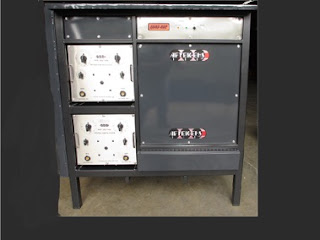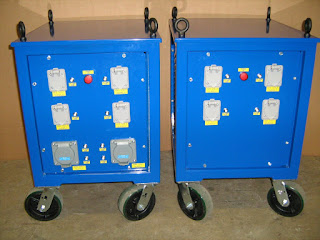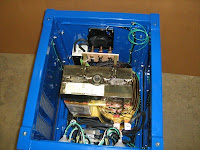 In metal working maintenance and repair, it is sometimes required to repair or replace a weld, or remove excess metal from a worn or defective part. A process called air carbon-arc (also known as air arc) gouging, developed in the 1940’s, has become a widely accepted method for metal working. Compared to grinding, chipping, and cutting, air arc gouging provides a much faster, more efficient, and more cost-effective means to remove unwanted metal.
In metal working maintenance and repair, it is sometimes required to repair or replace a weld, or remove excess metal from a worn or defective part. A process called air carbon-arc (also known as air arc) gouging, developed in the 1940’s, has become a widely accepted method for metal working. Compared to grinding, chipping, and cutting, air arc gouging provides a much faster, more efficient, and more cost-effective means to remove unwanted metal.Air carbon-arc gouging differs significantly from oxy-fuel cutting (OFC) and plasma cutting. Air carbon-arc does not require oxidation to maintain the cut and is able to be used on many kinds of metal. Air carbon-arc gouging cuts and removes metal by an electric arc created a carbon or graphite electrode as it is drawn along the target metal. As the arc melts the target metal, a steady, high velocity air stream blows the molten material out of the way. The arc is supported by a constant current power source. A compressed 60 to 100 psi gas source supplies the air stream. A special air arc torch is required, as it not only holds the electrodes, but has unidirectional air ports built in to direct the air stream.
Air carbon-arc gouging will work on any material that will conduct electricity and which can be melted by the electric arc, such as carbon steel, stainless steel, cast irons, and many copper alloys. Metal removal rate is controlled by increasing the gouger’s amperage, slowing down the movement of the electrode, and by the efficiency of the air stream. Most common uses for air arc gouging are cutting, removal of defective welds, removal of bolts, removal of rivets, making holes, and casting finishing.
If you have any questions about air carbon-arc gougers, contact:
AFTEK-EHS Welders
6121 Airways Blvd.
Chattanooga, TN 37421
Phone # 423.424.0515
Fax # 423.424.0518















